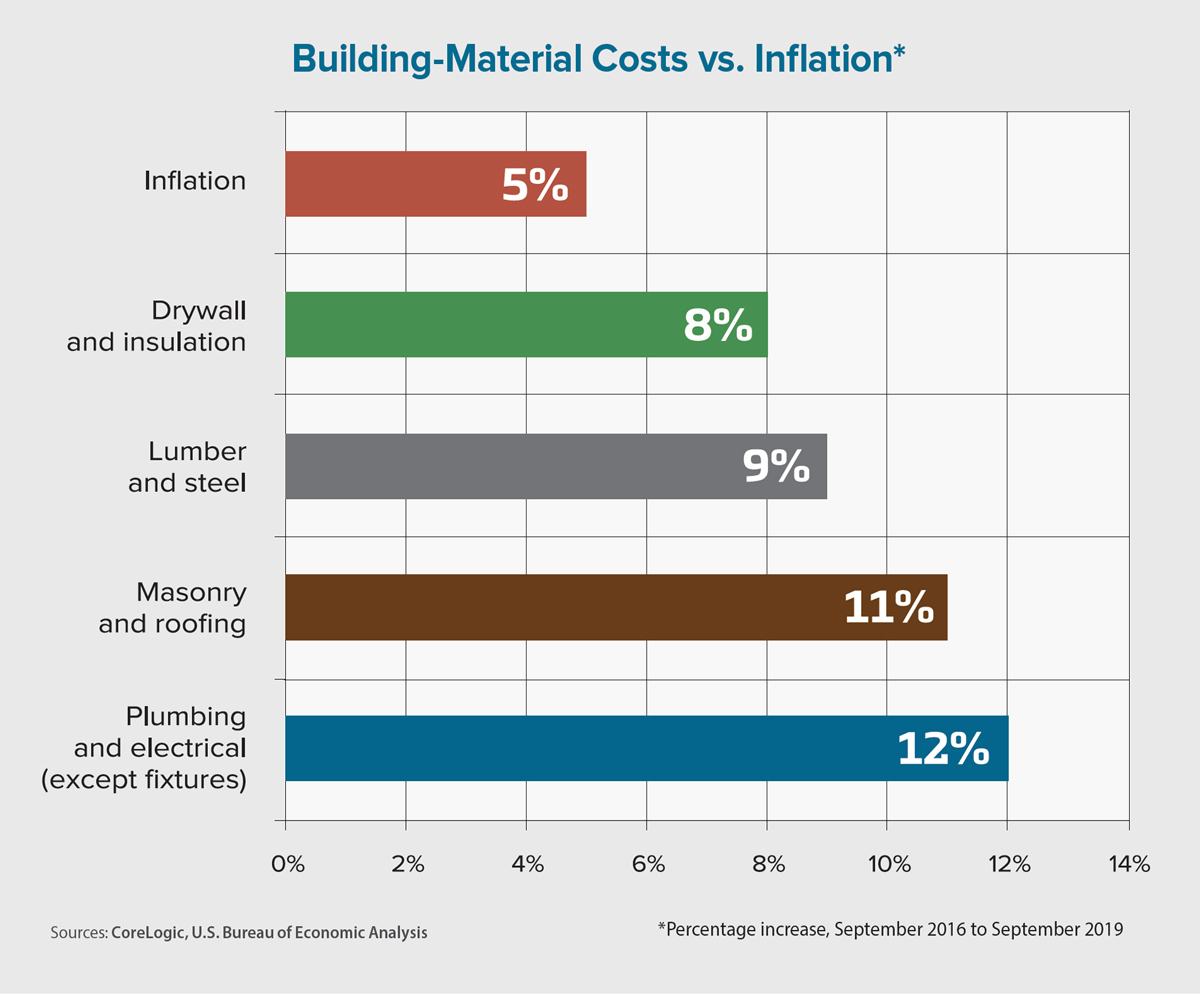The U.S. housing market benefited in 2019 from mortgage and unemployment rates that were each below 4%, the first time that happened in the post-World War II era. In 2020, we expect more of the same. Although economic growth will likely be slower than it was last year, it will be sufficient to continue the sub-4% readings for home loan interest and joblessness.
This economic environment should spur more people to buy their first home. With housing supply expected to remain lean — especially for lower-priced, entry-level homes — mortgage originators should look for lower-priced homes to appreciate faster than higher-priced homes.
CoreLogic’s home-price index forecast predicts that prices will rise more in 2020 than in 2019 — 4.8% versus 3.6%, based on annual averages. During the year ending this past October, homes valued at least 25% below their local area’s median price went up 5.5%, while those valued at least 25% above the local median were up 3.1%. We expect lower-priced homes to continue to appreciate more quickly this year than stheir higher-priced counterparts.
Rising home prices also will create more home equity wealth in 2020. During the 12-month period ending in September 2019, the average homeowner gained $5,300 in equity. These increases will continue to help sustain consumption and home-improvement spending. They also are likely to contribute to nationwide delinquency and foreclosure rates remaining at or below current levels, which are already the lowest in more than 20 years.
With higher prices, however, comes less affordability, and this affects renters, too. Our single-family rent index found that nationwide rents were up 3% annually this past September, about double the rate of inflation. As shelter takes a bigger bite out of household pocketbooks in 2020, a solution is to build more homes.
We expect more housing starts in 2020 than in 2019, but these new homes will generally add supply in the higher-priced and rental-housing buckets, not in the least expensive tier. In part, this reflects the rising costs of labor, land and materials, which have risen about twice as fast as inflation over the past three years. The U.S. Bureau of Economic Analysis reported that the personal consumption expenditures price index increased 5.3% from September 2016 to September 2019, while compensation for construction-industry workers rose 9.2% from third-quarter 2016 to third-quarter 2019, according to the U.S. Bureau of Labor Statistics.
The costs associated with purchasing and preparing a lot; acquiring permits and inspections; hiring labor; and buying materials account for the bulk of a new home’s price tag. The National Association of Home Builders reported that, from 2009 to 2017, about 60% of the sales price of a newly built house was reflected in the structure’s construction costs. CoreLogic found that the price for each major material involved in homebuilding has outpaced inflation since 2016, a trend that is expected to continue in 2020.
One final point: Certain cities and local neighborhoods may deviate widely from these expected nationwide trends. As an example, even though our U.S. home-price index rose last year and is forecast to rise this year, home prices declined in about 20 metropolitan areas year over year this past September.
Our market-risk indicator indicates a high likelihood that six metro areas will experience 12-month price declines in 2020. These metros are Flagstaff, Prescott and Lake Havasu City-Kingman, Arizona; Houma-Thibodaux, Louisiana; and Naples-Immokalee-Marco Island and Cape Coral-Fort Myers, Florida. And although we project U.S. delinquency rates to be at or below current levels, past-due mortgages will rise in locales affected by a weakening economy or by a natural disaster.
Author
-

Frank E. Nothaft is chief economist for CoreLogic, America’s largest provider of advanced property and ownership information, analytics and data-enabled services. He leads the economics team responsible for analysis, commentary and forecasting trends in global real estate, insurance and mortgage markets. Before joining CoreLogic, Nothaft served as chief economist for Freddie Mac. Prior to Freddie Mac, he was an economist with the Board of Governors of the Federal Reserve System.





